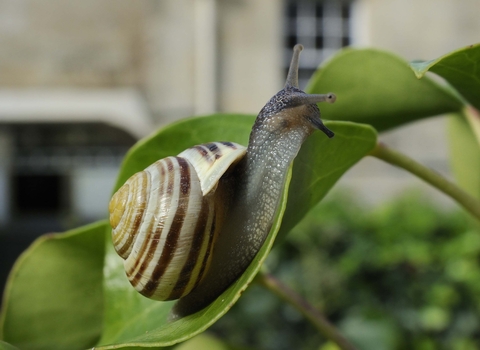
White-lipped Snail ©Nick Upton/2020VISION
White-lipped snail
The White-lipped snail comes in different colour forms, but always has a white band around the opening of its shell. It prefers damp spots in wide range of habitats, from gardens to grasslands, woods to hedges.
